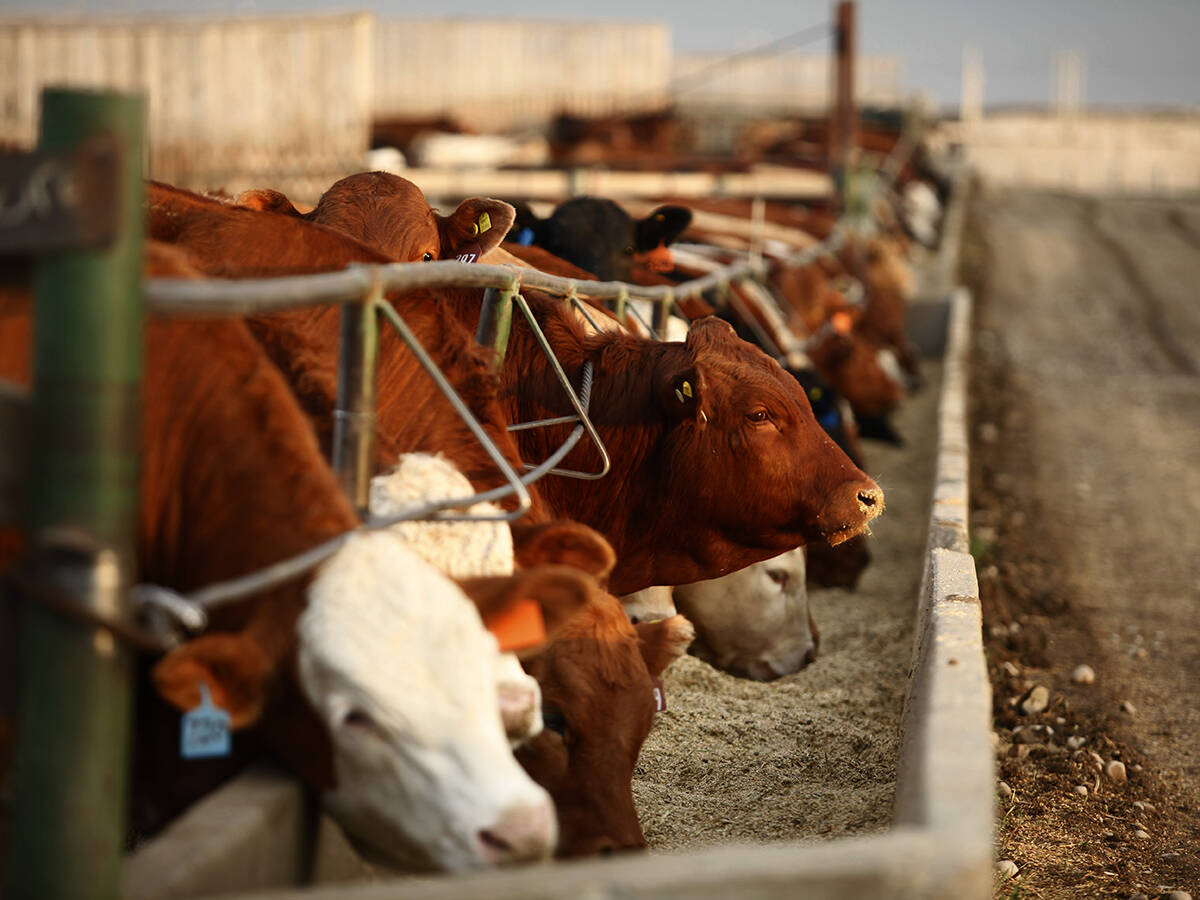In most circumstances in business and farming, the saying “slow and steady wins the race” is true more often than not. Since the start of 2014, farmers have been hearing about a downturn in commodity prices. A high carryout from the 2013 crop in the U.S. (and continued growth in other parts of the world) indicated lower demand for corn, meaning growers would shift those acres to soybeans. Much of that switch occurred, along with expected downward swings in prices for corn and soybeans.
Yet in spite of these factors, there’s been a recent rally that defies logic in some respects. On Oct. 1 soybeans delivered to Hamilton were fetching $10 per bushel ($367 per tonne). On Oct. 14, a bushel of soybeans was worth $10.80 ($396 per tonne), an increase of $29 in two weeks. Furthermore, 2015 soybeans delivered at Hamilton on Oct. 1 were worth $10.05 per bushel ($369 per tonne); delivered on Oct. 14, those same soybeans were worth $10.65 or $390 per tonne — an increase of $21.
Read Also

U.S. livestock: Cattle extend gains on improving cash prices, packer demand
Reuters — Chicago Mercantile Exchange live cattle futures set a three-week high and feeder cattle hit their highest level in…
But farmers need to be wary, according to Neil Hemingway, regional market advisor for Broadgrain Commodities in Stratford, Ont. Supply-and-demand economics have less to do with any rally taking shape for the time being, he says.
On Tuesday (Oct. 14), Hemingway sent a circular citing harvest delays in the U.S., dry planting conditions in northern Brazil (which will delay subsequent plantings of second-crop corn) and rumours of China buying more soybeans as influences behind this rally. Also on his list was the influence exerted by fund managers who are exiting their large short positions and waiting for signs that commodities are strengthening. Last but not least, the Canadian dollar was trading below US90 cents.
To show just how skewed any one influence can be, Hemingway noted the delayed harvest actually allows the elevator and transportation system the opportunity to get rid of what’s already accumulated.
“It’s not that the end-user doesn’t want it, it’s that the infrastructure just can’t get it to him in the fashion that he wants it,” said Hemingway, citing the holdup in movement of harvested crops across the Prairies last winter. “A delayed harvest –- as much stress as that creates on the producer –- can actually put a few more dollars in his pocket.”
What confounds the issue, however, is the effect of world conditions: What is the impact of Ebola in the U.S.? What is the overall effect of ISIS or a potential economic downturn in Europe? These are the factors being weighed by the fund managers — right now — and the primary reason to stay the course on commodities.
“When the fund managers wake up in the morning, they’re not concerned about the spread of Ebola and ISIS and the possible downturn of the European economy; they’re looking out for their job,” says Hemingway. “If you’re a player in the market, part of your job is deciding when to sit on the sidelines.”
At this point, says Hemingway, the markets are nervous –- and the markets like consistency. So this is a technical rally, not one based on harvest delays or yields or exports. As Corn+Soybean Digest columnist Kevin Van Trump states, “The world as we know it has drastically changed over the past few weeks.”
During that time, he notes, “money flow” and “rotation of money” have become the driving forces inside the market.
Hemingway’s conclusion: “Don’t get caught up with this ‘bull rally’ in a ‘bear market.'”
— Ralph Pearce is a field editor for Country Guide at St. Marys, Ont.















